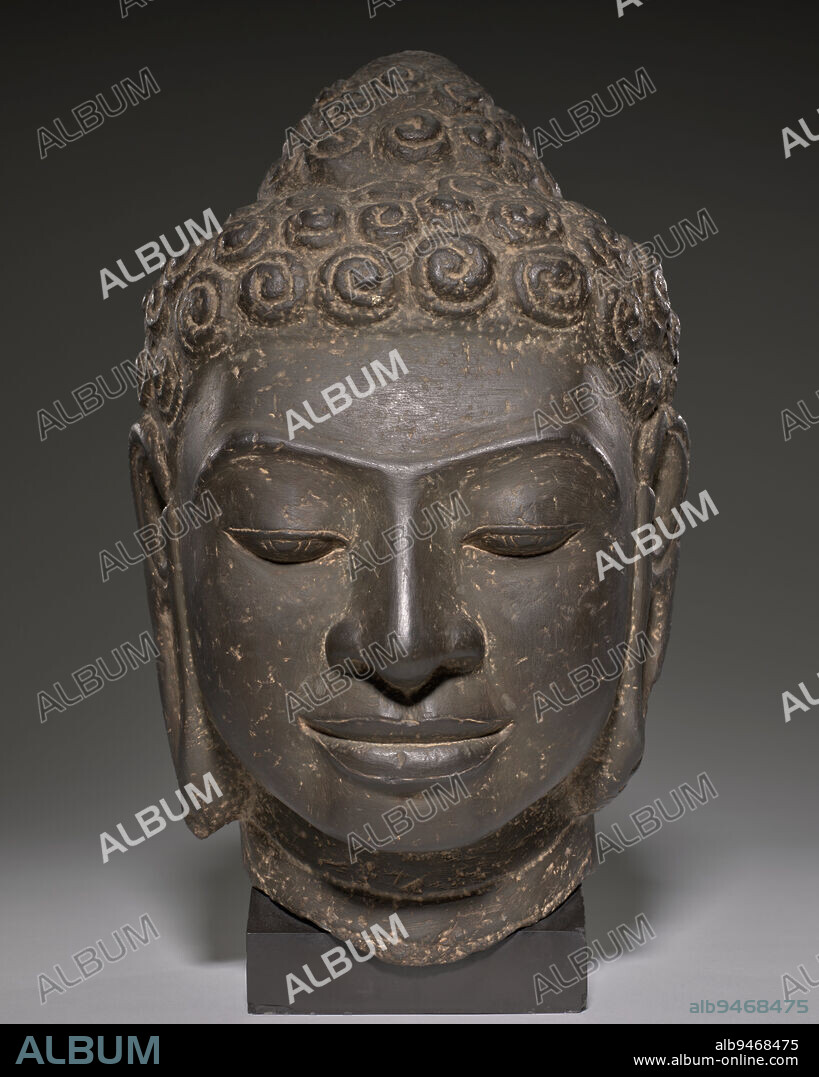alb9468475
Buddha Head, 8th century, 10 1/2 x 8 in. (26.67 x 20.32 cm), Limestone, Cambodia or Thailand, Mon-Dvaravati Style, This Buddha demonstrates a critical innovation of Southeast Asian sculpture: the early translation of established Indian prototypes into distinctly local expressions. The sculptor fully captures the calm bliss of the enlightened being while subtly incorporating the facial features of the indigenous population. Similarly, artists of the Mon-Dvaravati period exaggerated the Buddhas snail-shell curls, an attribute codified in Indian aesthetic treatises; the tight whorls would have had special significance to a culture where shells were valued forms of ornamentation.

|
Zu einem anderen Lightbox hinzufügen |
|
Zu einem anderen Lightbox hinzufügen |



Haben Sie bereits ein Konto? Anmelden
Sie haben kein Konto? Registrieren
Dieses Bild kaufen

Untertitel:
Siehe automatische Übersetzung
Buddha Head, 8th century, 10 1/2 x 8 in. (26.67 x 20.32 cm), Limestone, Cambodia or Thailand, Mon-Dvaravati Style, This Buddha demonstrates a critical innovation of Southeast Asian sculpture: the early translation of established Indian prototypes into distinctly local expressions. The sculptor fully captures the calm bliss of the enlightened being while subtly incorporating the facial features of the indigenous population. Similarly, artists of the Mon-Dvaravati period exaggerated the Buddhas snail-shell curls, an attribute codified in Indian aesthetic treatises; the tight whorls would have had special significance to a culture where shells were valued forms of ornamentation.
Bildnachweis:
Album / quintlox
Freigaben (Releases):
Model: Nein - Eigentum: Nein
Rechtefragen?
Rechtefragen?
Bildgröße:
5121 x 6401 px | 93.8 MB
Druckgröße:
43.4 x 54.2 cm | 17.1 x 21.3 in (300 dpi)
Schlüsselwörter:
 Pinterest
Pinterest Twitter
Twitter Facebook
Facebook Link kopieren
Link kopieren Email
Email
